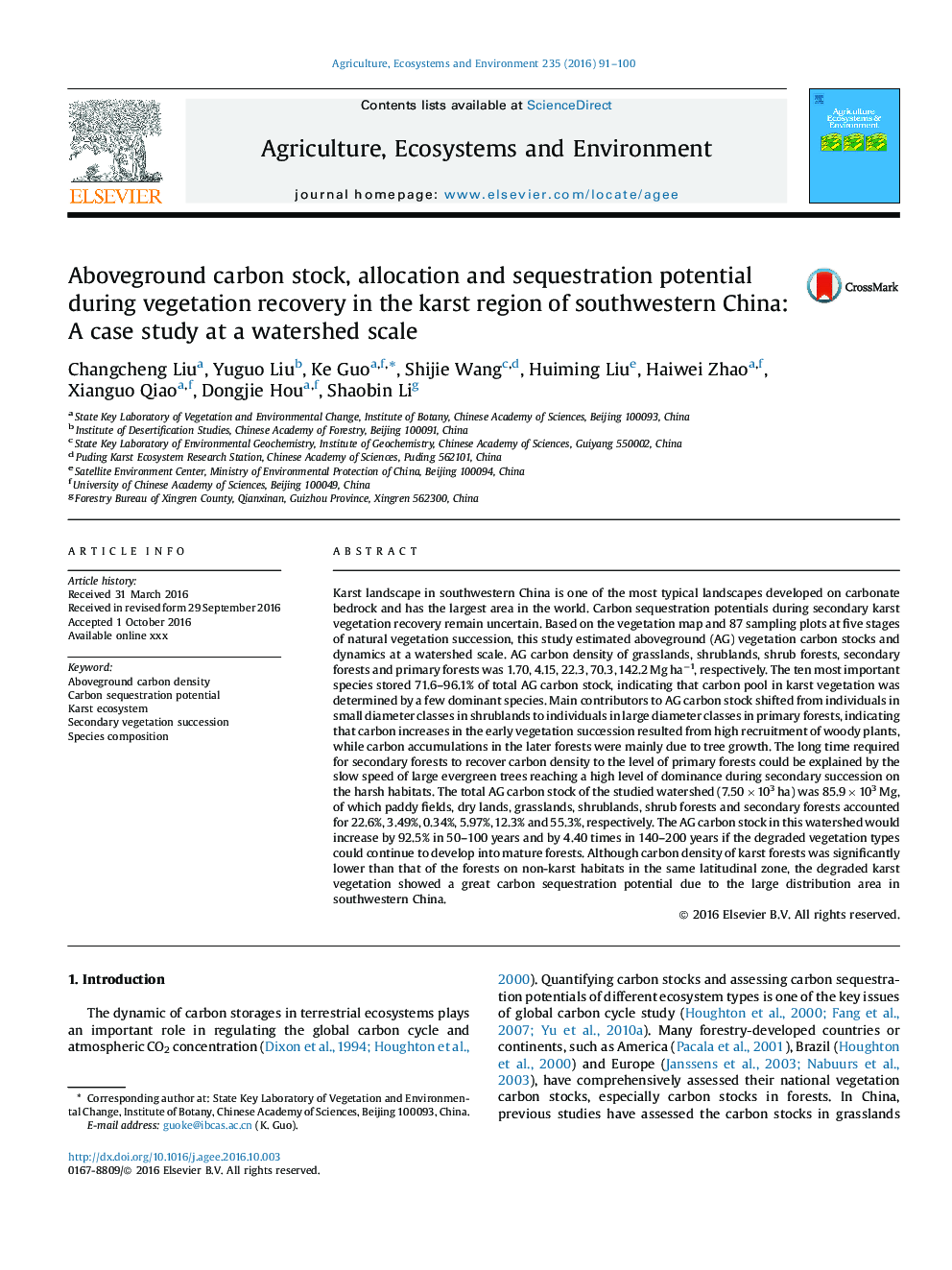| کد مقاله | کد نشریه | سال انتشار | مقاله انگلیسی | نسخه تمام متن |
|---|---|---|---|---|
| 5538071 | 1552017 | 2016 | 10 صفحه PDF | دانلود رایگان |
عنوان انگلیسی مقاله ISI
Aboveground carbon stock, allocation and sequestration potential during vegetation recovery in the karst region of southwestern China: A case study at a watershed scale
ترجمه فارسی عنوان
ذخایر کربن بالای زمین، پتانسیل تخصیص و توزیع در طی بازیابی پوشش گیاهی در منطقه کارست جنوب غربی چین: مطالعه موردی در مقیاس حوزه آبخیز
دانلود مقاله + سفارش ترجمه
دانلود مقاله ISI انگلیسی
رایگان برای ایرانیان
کلمات کلیدی
تراکم کربن بالای سطح زمین، پتانسیل تسریع کربن، اکوستیک کارست، جانشینی ثانویه گیاهی، ترکیب گونه ها،
موضوعات مرتبط
علوم زیستی و بیوفناوری
علوم کشاورزی و بیولوژیک
علوم زراعت و اصلاح نباتات
چکیده انگلیسی
Karst landscape in southwestern China is one of the most typical landscapes developed on carbonate bedrock and has the largest area in the world. Carbon sequestration potentials during secondary karst vegetation recovery remain uncertain. Based on the vegetation map and 87 sampling plots at five stages of natural vegetation succession, this study estimated aboveground (AG) vegetation carbon stocks and dynamics at a watershed scale. AG carbon density of grasslands, shrublands, shrub forests, secondary forests and primary forests was 1.70, 4.15, 22.3, 70.3, 142.2 Mg haâ1, respectively. The ten most important species stored 71.6-96.1% of total AG carbon stock, indicating that carbon pool in karst vegetation was determined by a few dominant species. Main contributors to AG carbon stock shifted from individuals in small diameter classes in shrublands to individuals in large diameter classes in primary forests, indicating that carbon increases in the early vegetation succession resulted from high recruitment of woody plants, while carbon accumulations in the later forests were mainly due to tree growth. The long time required for secondary forests to recover carbon density to the level of primary forests could be explained by the slow speed of large evergreen trees reaching a high level of dominance during secondary succession on the harsh habitats. The total AG carbon stock of the studied watershed (7.50 Ã 103 ha) was 85.9 Ã 103 Mg, of which paddy fields, dry lands, grasslands, shrublands, shrub forests and secondary forests accounted for 22.6%, 3.49%, 0.34%, 5.97%, 12.3% and 55.3%, respectively. The AG carbon stock in this watershed would increase by 92.5% in 50-100 years and by 4.40 times in 140-200 years if the degraded vegetation types could continue to develop into mature forests. Although carbon density of karst forests was significantly lower than that of the forests on non-karst habitats in the same latitudinal zone, the degraded karst vegetation showed a great carbon sequestration potential due to the large distribution area in southwestern China.
ناشر
Database: Elsevier - ScienceDirect (ساینس دایرکت)
Journal: Agriculture, Ecosystems & Environment - Volume 235, 1 November 2016, Pages 91-100
Journal: Agriculture, Ecosystems & Environment - Volume 235, 1 November 2016, Pages 91-100
نویسندگان
Changcheng Liu, Yuguo Liu, Ke Guo, Shijie Wang, Huiming Liu, Haiwei Zhao, Xianguo Qiao, Dongjie Hou, Shaobin Li,
